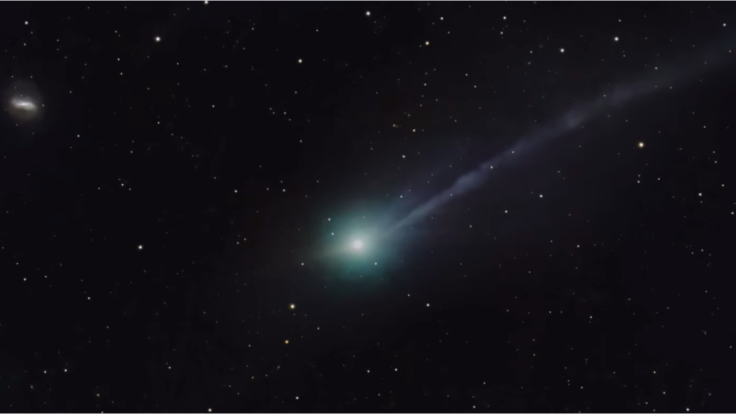3I/ATLAS: Kaku Questions Whether the Interstellar Object Is Something More
The interstellar object 3I/ATLAS remains intact after its solar flyby, prompting physicist Michio Kaku to call for transparency and further investigation into its unusual behaviour.

The interstellar object 3I/ATLAS has become the centre of an intensifying scientific debate, with renowned physicist Dr Michio Kaku and Harvard astrophysicist Professor Avi Loeb calling for complete transparency and deeper analysis of its unusual characteristics.
Formally designated C/2025 N1 (ATLAS), the object was detected on 1 July 2025 by the ATLAS survey telescope in Chile, marking only the third confirmed interstellar visitor to enter our solar system after 'Oumuamua and 2I/Borisov.
With NASA estimating a nucleus measuring between 440 metres and 5.6 kilometres, 3I/ATLAS has ignited serious questions about its physical behaviour — and whether publicly available data tells the whole story.
A Rare Interstellar Visitor With Unusual Behaviour
3I/ATLAS continues to generate debate after theoretical physicist Dr Michio Kaku questioned whether publicly available data tell the full story.
Kaku suggested the absence of fragmentation after the object's close approach to the Sun raises 'deep questions' about its nature.
Kaku criticised NASA for withholding high-resolution images and spectrographic data that could allow independent scientists to assess 3I/ATLAS more thoroughly.
He said: 'This isn't something that needs to be classified,' warning that secrecy only fuels speculation rather than advancing scientific understanding.
He told IBTimes UK that the public release of all relevant data is essential for rigorous evaluation, emphasising that speculation without quantification is misleading.
'Speculation is fine. But you have to quantify it,' he said.
Deepfakes Targeting Kaku Add Confusion
Kaku also issued a warning about AI-generated deepfake videos falsely depicting him claiming 3I/ATLAS is an alien spacecraft.
He condemned the clips as 'fraudulent' and 'misleading the public with crazy false claims,' urging platforms to remove them.
The scientist stressed that rigorous evidence, not online manipulation, must underpin any claims about interstellar objects.
Scientific Observations Raise More Questions
Despite misrepresentation online, verified scientific data continues to paint a complex picture.
- James Webb Space Telescope (JWST) readings reveal a coma unusually rich in carbon dioxide, with a CO₂-to-water ratio higher than that of typical comets.
- Swift Observatory ultraviolet imaging detected hydroxyl (OH) emission, confirming water vapour activity.
- Ground-based spectroscopy reveals a heterogeneous blend of grains and unusual surface chemistry, suggesting differences from standard cometary bodies.
Some researchers are also examining reports of sudden acceleration and strong jet-like outgassing, though Kaku emphasises that such behaviour could still arise from natural processes.
He stressed to IBTimes UK that extraordinary claims require robust evidence: 'There could be natural reasons for the sudden change in speed ... that's not a smoking gun.'
Avi Loeb's Perspective: Could 3I/ATLAS Be Artificial?
Professor Avi Loeb, who leads Harvard's Galileo Project, argues that several anomalies deserve more attention.
In his analysis, he highlights:
- A high nickel-to-iron ratio is rare among comets.
- Traces of cyanide and a nickel compound resembling engineered alloys.
- An unusual anti-tail, with material streaming towards the Sun rather than away — behaviour he suggests could mimic a braking mechanism rather than natural outgassing.
Loeb calls 3I/ATLAS a potential 'black-swan event', stressing that rare phenomena should be evaluated with open, rigorous scientific inquiry.
Why the Debate Matters
For Kaku, the issue is transparency, not sensationalism. 'This is a once-in-a-lifetime event,' he said. 'The scientific community should be able to examine every available detail.'
The discussion surrounding 3I/ATLAS highlights two contemporary challenges: the complexity of studying interstellar visitors and the dissemination of misinformation exacerbated by advanced AI tools.
Whether 3I/ATLAS is an unusually complex comet or something more exotic, both Kaku and Loeb agree that public access to data is essential for uncovering the truth.
© Copyright IBTimes 2025. All rights reserved.



















